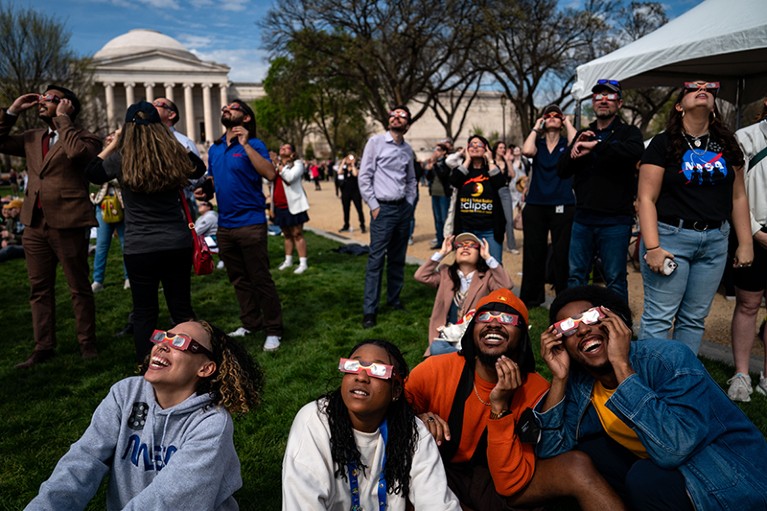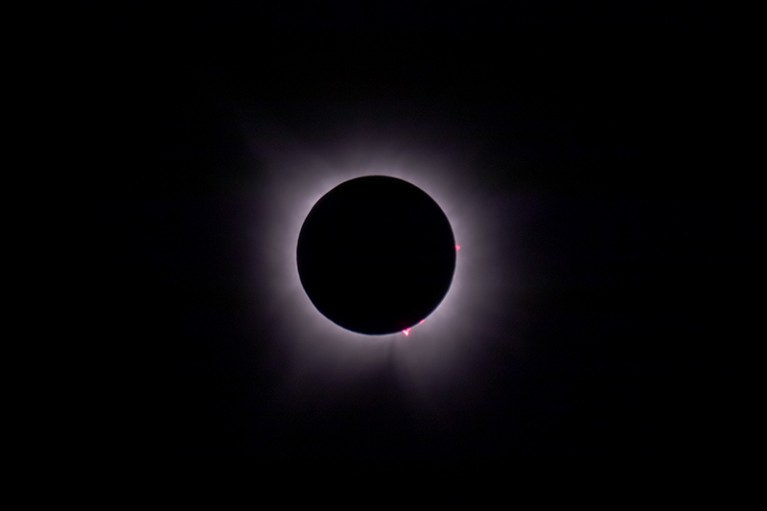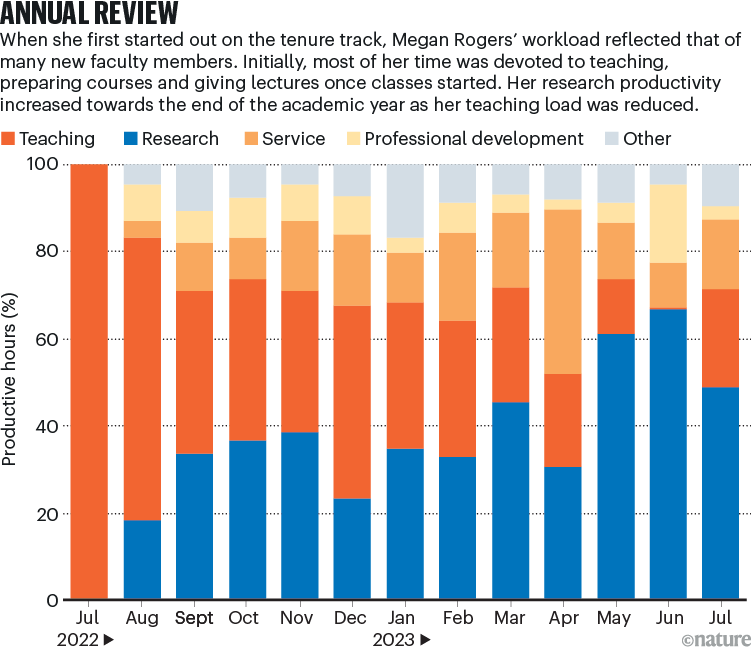[ad_1]
Heber Springs, Arkansas
“It makes your heart want to skip a beat — and you cannot really describe it to someone who hasn’t experienced it in person,” said Lynnice Carter on Monday, after watching the total solar eclipse that crossed North America. Carter, a retired educator from Blue Springs, Mississippi, travelled about 230 miles (370 kilometres) to Heber Springs, Arkansas, to see the much-anticipated celestial event from the ‘path of totality’, the track from Sinaloa, Mexico, to New Brunswick, Canada, where the Moon completely blocked the Sun’s face.
Carter wasn’t alone in making time for the eclipse. Millions viewed the phenomenon from watch sites along the path of totality, where people picnicked, listened to music and donned inexpensive eclipse glasses that helped them to see the main event safely. Some researchers celebrated in their own way — by chasing the eclipse in aeroplanes or with high-resolution cameras on the ground. Although more than a few were disappointed by cloud-filled skies in some locations, others were dazzled by the fiery activity they could see within the Sun’s outer atmosphere, or corona. Here, Nature chats with casual observers and solar researchers alike to hear about what they saw — and what they learnt.

Crowds gathered on the National Mall in Washington DC to watch the eclipse on 8 April.Credit: Kent Nishimura/Getty
Some marveled over the science that they could see by eye:
The last time a total solar eclipse passed over North America was 2017, but it was during a solar minimum — a period of weak activity occurring every 11 years on the Sun when there are fewer sunspots and plasma eruptions. This time around, viewers experienced a solar maximum, when structures in the Sun’s corona are at their most fiery. “This one was just so much brighter, and so much prettier! It was just awesome,” said Alice Beverly, who journeyed from Tulsa, Oklahoma, to Heber Springs to watch.
Astronomers have long observed ‘shadow bands’ during total solar eclipses. These as-yet-unexplained phenomena are alternating segments of light and dark that pass over the ground in the moments just before and after the full eclipse. One hypothesis is that they are caused by turbulence in the atmosphere as the sliver of light from the eclipse passes through. Viewers like Kelley Boyett were particularly excited to see them. “I researched a lot, and brought a white posterboard to see the little crescents and shadow bands. The coolest thing was the shadow banding — it looked like racing water across the posterboard.” Boyett, a postal office worker, travelled from Bronson, Texas, to a watch site in Heber Springs for the festivities.
Others made the most of a cloud-covered sky:
“I was disappointed, not so much for myself — since it was my fourth eclipse — but for my sister and her husband for whom this was going to be the first time,” said Jim Klimchuk, a solar physicist at NASA Goddard Spaceflight Center in Greenbelt, Maryland, who travelled to San Antonio, Texas, to view the eclipse. “During totality, it got dark. [Automatic] streetlights and building lights came on. And then for about five seconds, we could see the corona [amid the clouds]. No details at all, but we could see the brightness around the disk. That was very exciting.”
Marcel Corchado-Albelo, a solar physicist at the University of Colorado Boulder, spent the week leading up to the eclipse in Eagle Pass, Texas, visiting various schools as part of a public-outreach programme. On the morning of the eclipse, the approximately 400 people that gathered to watch at a student activity centre were “very nervous”, Corchado-Albelo said. Clouds loomed. The sun would peek from behind the clouds occasionally, and every time, “people were screaming”, he added. In the end, though, their fortune turned — the clouds parted as totality approached. And everyone screamed again.

Bright red spots called prominences appeared along the solar disk during the total eclipse.Credit: Sumeet Kulkarni/Nature
Researchers grabbed data that they can’t wait to analyse:
One thing many observers were mesmerized by during the eclipse was the appearance of bright red spots protruding from the solar disk. These are called prominences — worm-like filaments of plasma. One in particular, along the southern edge of the Sun, “looked like it was potentially lifting off”, said Amir Caspi, a solar physicist at the Southwest Research Institute in Boulder, Colorado, who travelled to Dallas, Texas, to watch the eclipse with his family.
Total solar eclipse 2024: how it will help scientists to study the Sun
Caspi leads 35 teams of citizen scientists that captured images of the eclipse from stations distributed along the path of totality. By recording images using identical telescopes and cameras, the project — called Citizen Continental-America Telescopic Eclipse, or Citizen CATE — aims to observe how structures within the corona evolve over time.
“A majority of our teams were able to get great data. But there were a few that got clouded out completely,” Caspi said. The citizen scientists are currently uploading their data — as much as tens of gigabytes per site — onto servers where it will be analysed to make an hour-long ‘film’ of the corona. Caspi expects the consolidated results to be available within the next month.
Another scientist closely watching structures in the corona was Cooper Downs, an astrophysicist at research and product-development firm Predictive Science in San Diego, California. He is part of a team that has spent the past few weeks predicting where in the corona features such as streamers will appear, with the idea of honing the firm’s solar model. Streamers are densely packed spikes of plasma pointing away from the solar core. “My initial impressions were pretty positive,” Downs said. “I saw these two streamers, one was really bright on the top left and another to the south.” Downs is now comparing the simulations generated before and during the eclipse with images taken by astrophotographers. “When you do the detailed comparison, you start seeing some discrepancies”, which should motivate revisions to the model, he told Nature.
[ad_2]
Source Article Link





